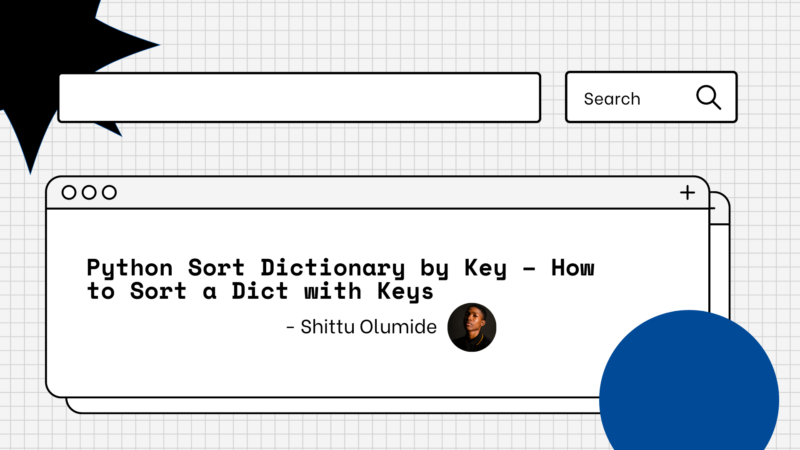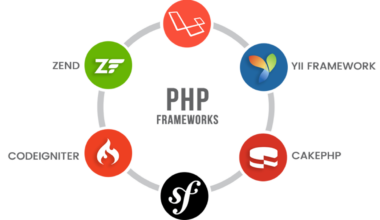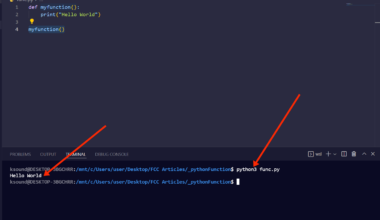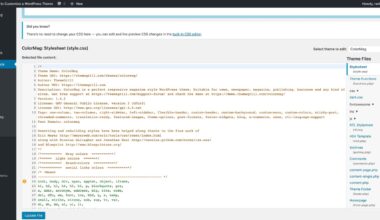Introduction: What are Python Dictionaries?
As a Python developer, you might often come across situations where you need to store and manipulate data in a structured manner. This is where Python dictionaries come in handy. Python dictionaries are a type of data structure that allows you to store data in key-value pairs.
In simple terms, a dictionary is like a phone book where you can look up a name (the key) and find the corresponding phone number (the value). In Python, the keys in a dictionary can be of any immutable data type such as strings, integers, or tuples. The values, on the other hand, can be of any data type – strings, integers, floats, lists, tuples, or even another dictionary.
One of the most significant advantages of using dictionaries is their ability to look up data quickly. Since the data is stored in key-value pairs, you can easily retrieve the value associated with a particular key without having to iterate through the entire data structure. This makes dictionaries a powerful tool for organizing and processing large amounts of data.
Another advantage of using dictionaries is their flexibility. You can add, remove, or modify key-value pairs as needed. This means that you can easily update your data structure as your data changes, without having to worry about restructuring your entire program.
In summary, Python dictionaries are a powerful tool for organizing and manipulating data in a structured manner. They allow you to store data in key-value pairs, which can be quickly and easily looked up. Their flexibility also makes them ideal for handling dynamic data that changes over time. In the next section, we will dive deeper into the concept of key-value pairs in Python dictionaries.
Understanding Key-Value Pairs in Python Dictionaries
As mentioned earlier, Python dictionaries store data in key-value pairs. A key is a unique identifier that is used to look up a corresponding value. For example, let’s say you want to store the ages of a group of people in a dictionary. You can use their names as keys and their ages as values. Here’s how you can create a dictionary with three key-value pairs:
people = {'Alice': 25, 'Bob': 30, 'Charlie': 35}
In this example, ‘Alice’, ‘Bob’, and ‘Charlie’ are the keys, and 25, 30, and 35 are the corresponding values. To access the value associated with a particular key, you can use the square bracket notation. For example, to get the age of Bob, you can use:
print(people['Bob']) # Output: 30
It’s important to note that keys in a dictionary must be unique. If you try to add a key that already exists, the new value will override the old one. For example, if you try to add a new key-value pair for ‘Bob’, the old value of 30 will be replaced with the new value of 32:
people['Bob'] = 32
print(people) # Output: {'Alice': 25, 'Bob': 32, 'Charlie': 35}
You can also use the
get()
method to retrieve the value associated with a key. The difference between using square bracket notation and the
get()
method is that if the key doesn’t exist in the dictionary, square bracket notation will raise a
KeyError
exception, while the
get()
method will return
None
or a default value that you specify. For example:
print(people.get('Dan')) # Output: None
print(people.get('Dan', 'Unknown')) # Output: 'Unknown'
In the first example, the key ‘Dan’ doesn’t exist in the dictionary, so the
get()
method returns
None
. In the second example, we’ve specified a default value of ‘Unknown’, so the
get()
method returns ‘
How to Create and Manipulate Python Dictionaries
Creating a dictionary in Python is straightforward. You can create an empty dictionary by using curly braces, or you can define it with key-value pairs inside. Here are some examples:
# Creating an empty dictionary
my_dict = {}
# Creating a dictionary with key-value pairs
my_dict = {'key1': 'value1', 'key2': 'value2', 'key3': 'value3'}
You can also create a dictionary using the built-in
dict()
function. Here’s an example:
my_dict = dict(key1='value1', key2='value2', key3='value3')
Adding a new key-value pair to a dictionary is also easy. You can simply use the square bracket notation and assign a value to the key. Here’s an example:
my_dict = {'key1': 'value1', 'key2': 'value2'}
my_dict['key3'] = 'value3'
print(my_dict) # Output: {'key1': 'value1', 'key2': 'value2', 'key3': 'value3'}
In the above example, we’ve added a new key-value pair ‘key3′:’value3’ to the dictionary. You can also use the
update()
method to add multiple key-value pairs to the dictionary. Here’s an example:
my_dict = {'key1': 'value1', 'key2': 'value2'}
my_dict.update({'key3': 'value3', 'key4': 'value4'})
print(my_dict) # Output: {'key1': 'value1', 'key2': 'value2', 'key3': 'value3', 'key4': 'value4'}
To remove a key-value pair from a dictionary, you can use the
del
keyword or the
pop()
method. Here’s an example using
del
:
my_dict = {'key1': 'value1', 'key2': 'value2', 'key3': 'value3'}
del my_dict['key2']
print(my_dict) # Output: {'key1': 'value1', 'key3': 'value3'}
Practical Applications of Python Dictionaries in Data Organization
Python dictionaries are widely used in various applications where data needs to be organized and accessed efficiently. Let’s take a look at some practical examples of how dictionaries can be used for data organization:
1. Storing configuration settings:
Dictionaries can be used to store configuration settings for applications. Each key-value pair can represent a specific setting, and the dictionary can be easily updated or modified to change the application’s behavior.
2. Counting occurrences:
Dictionaries can be used to count the number of occurrences of each item in a list. For example, suppose you have a list of words and you want to count how many times each word appears. You can use a dictionary to store the counts, with the word as the key and the count as the value.
words = ['apple', 'banana', 'cherry', 'apple', 'cherry', 'cherry', 'banana', 'apple']
word_counts = {}
for word in words:
if word in word_counts:
word_counts[word] += 1
else:
word_counts[word] = 1
print(word_counts) # Output: {'apple': 3, 'banana': 2, 'cherry': 3}
3. Grouping data:
Dictionaries can be used to group data based on a specific criterion. For example, suppose you have a list of people, and you want to group them by age. You can use a dictionary to store the groups, with the age as the key and a list of people as the value.
people = [
{'name': 'Alice', 'age': 25},
{'name': 'Bob', 'age': 30},
{'name': 'Charlie', 'age': 25},
{'name': 'David', 'age': 30}
]
age_groups = {}
for person in people:
age = person['age']
if age in age_groups:
age_groups[age].append(person)
else:
age_groups[age] = [person]
print(age_groups)
# Output: {25: [{'name': 'Alice', 'age': 25}, {'name': 'Charlie', 'age': 25}], 30: [{'name': 'Bob', 'age': 30}, {'name': 'David
Final Thought: Why Python Dictionaries are Essential for Efficient Data Management
Python dictionaries are a powerful tool for efficient data management. They allow you to store data in key-value pairs, making it easy to retrieve specific information without having to iterate through the entire data structure. Dictionaries are also flexible and can be easily modified, making them ideal for handling dynamic data that changes over time.
One of the main advantages of using dictionaries is their speed. Since they use a hash table to store data, lookups are incredibly fast, even for large datasets. This makes dictionaries an ideal tool for applications that require real-time data processing or analysis.
Another advantage of using dictionaries is their ability to handle complex data structures. Dictionaries can store values of any data type, including lists, tuples, and even other dictionaries. This allows you to organize data in a way that makes sense for your specific application, making it easier to analyze and manipulate the data.
Python dictionaries are also widely used in the field of data science. Many popular libraries, such as NumPy and Pandas, use dictionaries to store and manipulate data. For example, Pandas uses dictionaries to represent data frames, which are a fundamental data structure in data analysis.
In conclusion, Python dictionaries are a key tool for efficient data management. They allow you to organize data in a way that makes sense for your specific application, making it easier to analyze and manipulate the data. Dictionaries are fast, flexible, and widely used in various applications, making them an essential tool for any Python developer.






















